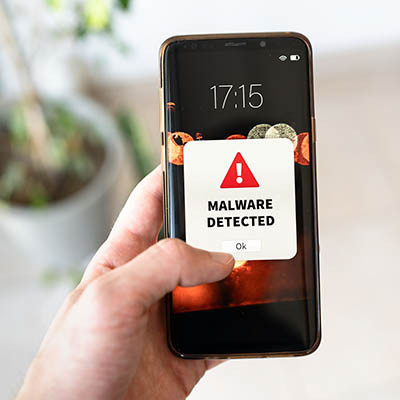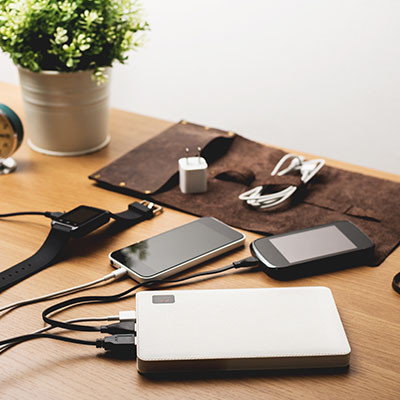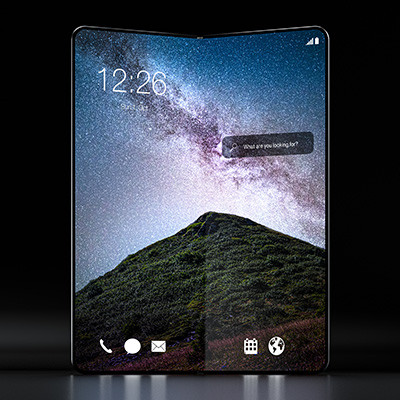Master Solutions Blog
Do you remember the days of waiting patiently for websites to load or files to download? That kind of waiting isn't just inconvenient—it directly impacts productivity and customer satisfaction. For businesses, harnessing the power of increasingly fast mobile technology is becoming key to staying competitive and efficient.
In a perfect utopia, you would never have to deal with random papers or sticky notes scattered all over your desk. Going paperless isn’t just trendy—it helps you stay organized, save money, and do something good for the environment. But what does it take to go fully paperless? Let’s take a look at a paperless strategy and what it can do for you.
McAfee recently released a list of 15 applications the company identified as “predatory loan apps” available for download from the Google Play Store. While steps have been taken to remove them from the platform, we can now discuss how mobile applications can be weaponized if a user is not careful.
Let’s start by discussing the current issue of SpyLoan apps.
Imagine a life with no random papers or sticky notes piling up on your desk. Going paperless isn’t just a cool trend—it’s a way to stay organized, save money, and help the environment. So what does it take to go 100% paperless? Let’s break it down.
Since mobile technology infiltrated the mainstream office, businesses have embraced it as a valuable communication tool. That said, mobile devices are also keys allowing hackers and other potential thieves access to your most inner sanctums. Today, we want to go over some of the options you have for mobile device management and why it’s such an important concept for your business.
With AI changing the way we work forever, it was only a matter of time before it infiltrated the mobile market. Nowadays, smartphones and tablets are smarter and more powerful than ever, all through the use of AI. Let’s look at the trends in mobile AI usage and how your business can leverage it to your advantage.
Mobile malware might not have a lot of attention on it, but it can be a significant problem for organizations that rely on smartphones. This goes double for small businesses that typically don’t have the large teams and big budgets for their mobile strategies that include devices, data and phone plans, and security controls. Today, we’ll look at mobile malware and how an organization with a limited budget can keep it from impacting its business.
With mobile devices playing a crucial role in modern business it’s extremely important to have a clear plan for managing them. Unfortunately, this isn’t so cut and dry. Today, we’ll explore the differences between two of the most popular mobile management strategies: Bring Your Own Device (BYOD) and Corporate-Owned, Personally Enabled (COPE).
With the summer months comes the promise of fun… why would you want to stress about your technology during that time? To help prevent this, we’ve put together some tricks to protect your devices… both from cybersecurity issues and from the weather.
As smartphones, tablets, and wearable devices become more advanced, the demand for efficient, longer-lasting, and faster-charging batteries continues to grow. Today, we explore the future of batteries for mobile technology and the innovations set to transform this market.
One of the most stressful situations one can imagine these days is losing a smartphone—especially because it is likely connected to your banking apps, social media, images, and so much more. We’ll walk you through some tips you can implement to locate your lost or stolen device.
Foldable phones are an interesting anomaly in recent technological development. The traditional flip phone eventually gave way to the large-screened smartphone, but now the smartphones have veered in the direction of folding. There is a considerable amount of excitement about these devices in some circles, but issues with pricing and fragility have kept them from going too mainstream yet. However, there are some arguments in favor of them that we want to examine today.
Businesses are always trying to improve on efficiency, and one method they use to do so is mobile technology. Businesses invest in mobile technology like smartphones, laptops, and data plans for their employees with the expectation that it will help them be more productive, but the fact of the matter is that these investments are costly for the return. There is another approach businesses use: Bring Your Own Device, or BYOD, and it’s a great way to save capital while achieving the same levels of productivity from mobile technology.
Organizations are always trying to get more efficient. One way that businesses are able to accomplish this is by utilizing mobile computing. This used to mean that businesses would have to spend a bunch of money purchasing phones, data plans, and the like for their employees. Some time ago, businesses started to realize that they could improve their mobile strategies without this massive expense by enacting a BYOD policy. Let’s discuss what a BYOD policy is and how it does more than just save a business money.
While smartphones can help businesses quite a bit, they can also be quite detrimental to their success. If you can get past the issues related to employees bringing their own devices to the workplace, then you’ll be able to save a considerable amount of time and money doling out mobile devices. However, you will need to make sure you have a mobile device management policy put in place so that you can control how those mobile endpoints interact with your business’ standing infrastructure and data.















